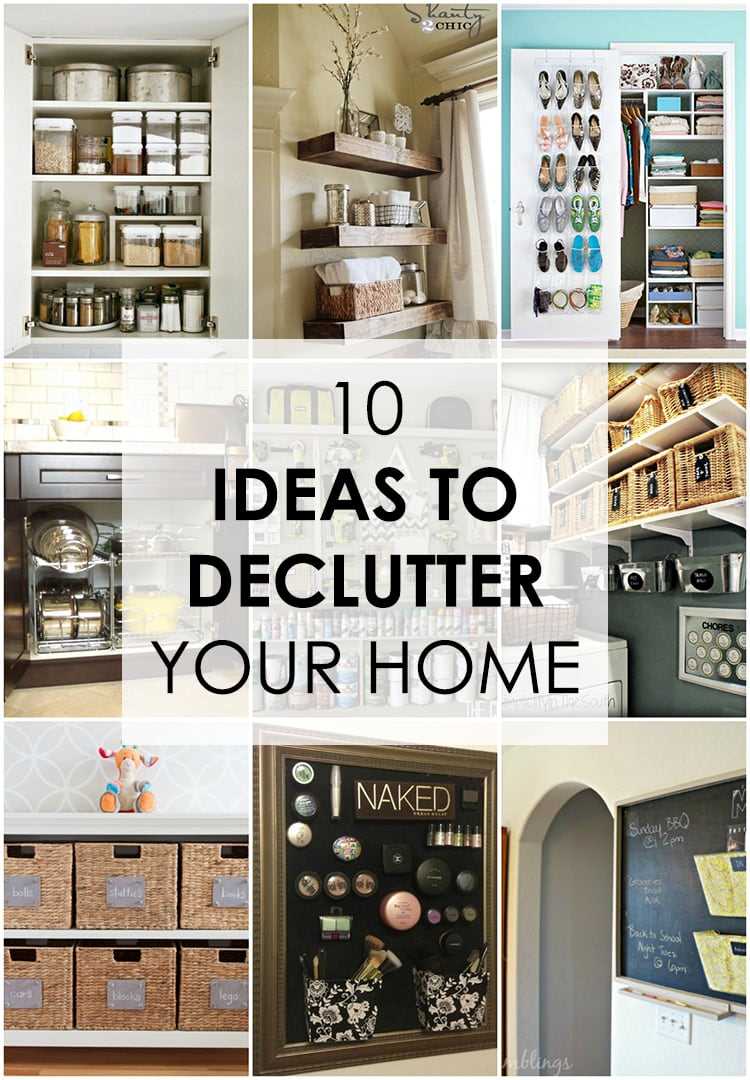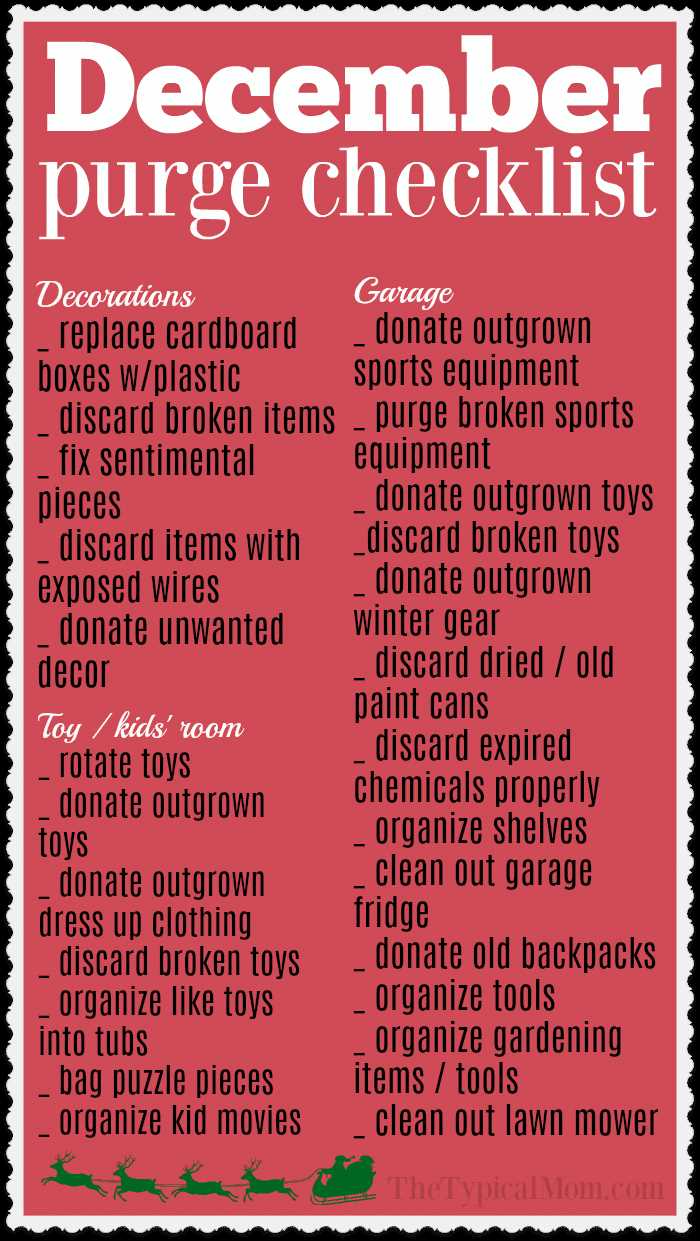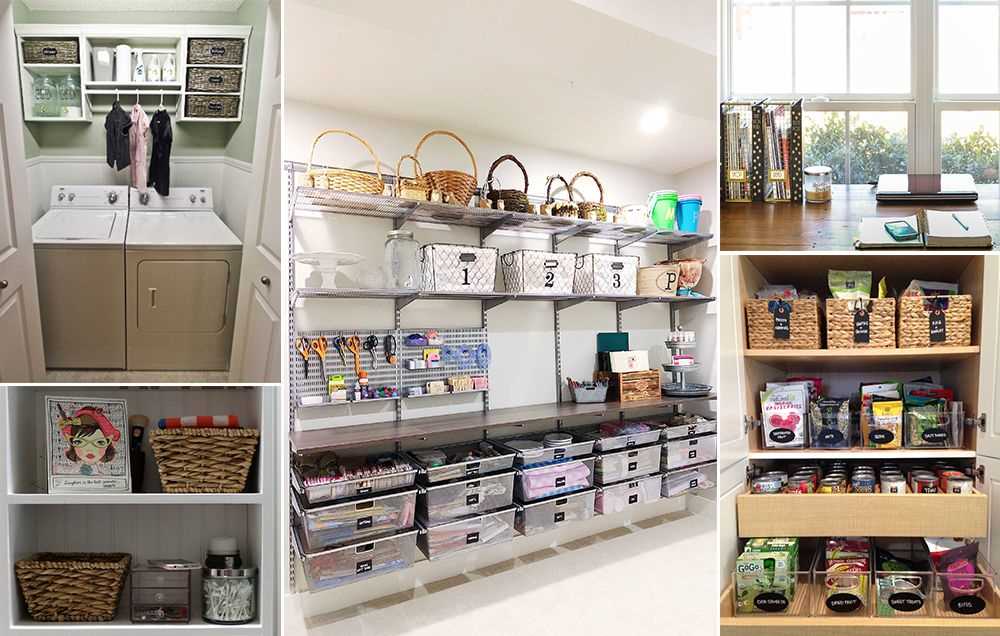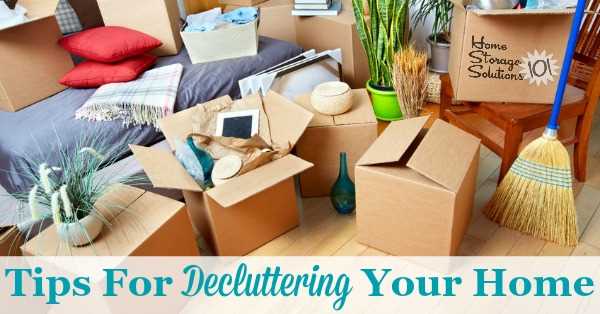




Have you ever felt overwhelmed by the clutter in your home? Do you constantly find yourself searching for things that seem to have disappeared into the chaos? If so, it may be time to declutter and organize your living space. Not only will a decluttered home help you find things more easily, but it will also create a more peaceful and harmonious environment.
Decluttering can be a daunting task, but with the right approach, it doesn’t have to be overwhelming. One of the first steps is to set aside dedicated time for decluttering. It’s important to be realistic and understand that decluttering your entire home may take several days or even weeks, depending on how much you have accumulated over the years. Start by focusing on one room or area at a time, and break it down into smaller tasks to make it more manageable.
When decluttering, it’s essential to be ruthless and minimize sentimental attachment. Ask yourself if an item is truly necessary or brings you joy. If not, it’s time to let go. Consider donating or selling items that are still in good condition but no longer serve a purpose in your life. Remember, the goal is to create a more streamlined living space.
Once you have decluttered, it’s time to organize. Invest in storage solutions such as baskets, bins, and shelves to keep your belongings in order. Group similar items together and label containers to make things easier to find. Creating designated spaces for everything will not only prevent clutter from piling up again but also make it easier to maintain a tidy home in the long run.
Decluttering your home is not a one-time task. It’s an ongoing process that requires regular maintenance. Take a few minutes each day to tidy up and put things back in their designated places. Develop a habit of decluttering as you go, whether it’s throwing away junk mail or organizing your closet. By incorporating these practices into your daily routine, you will be able to enjoy a clutter-free and organized living space.
Clearing your Space: A Step-by-Step Guide to Decluttering
1. Assess the Situation
Before you begin decluttering, take a moment to assess the situation. Evaluate the areas of your home that need decluttering, and make a plan for how to tackle each space. This will help you stay organized and focused throughout the decluttering process.
2. Start with Small Spaces

It can be overwhelming to declutter an entire home all at once, so start with small spaces to build momentum. Begin by decluttering a single drawer, shelf, or countertop. This will give you a sense of accomplishment and motivate you to continue decluttering.
3. Sort and Categorize
As you declutter each space, sort your belongings into categories. Create piles or containers for items to keep, donate, sell, or throw away. This will help you make decisions about what to keep and what to let go of, ensuring that you only keep what is essential or brings you joy.
4. Use the “Three-Box Method”
A popular decluttering method is the “Three-Box Method.” Use three boxes or containers labeled “Keep,” “Donate/Sell,” and “Throw Away.” As you sort through your belongings, place each item into one of the boxes. This method helps streamline the decluttering process and keeps you focused on your goal.
5. Create Storage Solutions
Once you have decluttered and sorted your belongings, it’s important to create storage solutions to keep your home organized. Invest in storage containers, baskets, and shelving units to help you maintain a clutter-free space. Consider using vertical space and utilizing hidden storage options to maximize your storage capacity.
6. Set Realistic Goals
Decluttering your entire home can take time, so set realistic goals to keep yourself motivated. Break down the decluttering process into manageable tasks and allocate specific timeframes to each task. Celebrate your achievements along the way to stay inspired and maintain your momentum.
7. Maintain a Clutter-Free Lifestyle
Decluttering is not a one-time event; it is a continuous process. To maintain a clutter-free lifestyle, make it a habit to regularly declutter and organize your space. Develop simple routines, such as sorting your mail immediately or dedicating a few minutes each day to tidying up. By consistently decluttering, you can prevent clutter from accumulating again.
Conclusion

Decluttering your home can improve your living space and provide a sense of calm and organization. By following these step-by-step guidelines, you can effectively clear your space and create a clutter-free environment that is both functional and visually appealing.
Sort, Categorize, and Organize
Step 1: Prepare
Before you start decluttering, it’s important to set aside some time and gather the necessary supplies. This will help you stay focused and work efficiently.
Supplies you’ll need:
- Trash bags
- Storage boxes or bins
- Labels
- Markers
- Cleaning supplies
Step 2: Sort
Begin by sorting items into categories. Create separate piles or designated areas for different types of items such as clothes, books, papers, and miscellaneous items. This will make the decluttering process easier and help you see the extent of your belongings.
Step 3: Categorize

Once you’ve sorted everything, it’s time to further categorize each group. For example, within the clothes category, you can have subcategories like shirts, pants, and dresses. This will help you see exactly what you have and make it easier to find items in the future.
Step 4: Declutter & Downsize
Now that you’ve sorted and categorized your items, it’s time to declutter. This means assessing each item and deciding whether to keep, donate, sell, or throw it away. Be honest with yourself and only keep items that you truly love or find useful. Let go of the rest to create more space and reduce clutter.
Step 5: Organize

After decluttering, it’s time to organize the items you’ve chosen to keep. Consider using storage solutions such as bins, shelves, or drawer dividers to maximize space and keep everything in its place. Label boxes and containers to easily locate items when needed.
Organizing tips:
- Store frequently used items within easy reach
- Group similar items together
- Utilize vertical space
- Keep surfaces clean and clutter-free
Step 6: Maintain
Maintaining an organized living space requires regular effort. Make it a habit to tidy up daily, put items back in their designated places, and continuously reassess your belongings to prevent clutter from accumulating again. Regular maintenance will help you enjoy a clutter-free and more peaceful home.
Get Rid of Unnecessary Items
One of the first steps to decluttering your home is getting rid of unnecessary items. This can be a difficult task, as we often attach sentimental value to things or convince ourselves that we might need them in the future. However, getting rid of these items can free up space and create a more organized and peaceful living environment.
1. Start with a decluttering plan
Before you begin, create a plan to tackle the clutter in your home. Start with one room or area at a time to avoid feeling overwhelmed. Set realistic goals for yourself and establish a timeline to keep yourself motivated.
2. Sort items into categories
When decluttering, it’s helpful to sort items into categories to make the process more organized. Create categories such as “keep,” “donate,” “sell,” and “toss.” This will help you make decisions about what items you truly need and what can be let go.
3. Ask yourself important questions
When deciding whether to keep or get rid of an item, ask yourself some important questions:
- Have I used this item in the past year?
- Does this item serve a purpose in my life?
- Does it bring me joy or enhance my living space?
- Do I have duplicates of this item?
Answering these questions honestly can help you determine whether an item is truly necessary or if it can be let go.
4. Consider sentimental items
When it comes to sentimental items, it can be even harder to let go. However, it’s important to remember that memories are not tied to physical objects. Consider taking a photograph of sentimental items before letting them go, as this can help preserve the memory without taking up physical space.
5. Find a new home for unwanted items
Once you’ve decided to get rid of an item, find a new home for it. Consider donating items to a local charity or thrift store, selling them online or at a yard sale, or giving them away to friends or family who may need them. By finding a new purpose for these items, you’ll reduce waste and help someone else in the process.
Remember, decluttering takes time and effort, but the result is a more peaceful and organized living space. Start small, stay focused, and enjoy the benefits of a clutter-free home.
Maximizing Storage: Creative Solutions to Organize Your Belongings
1. Utilize Vertical Space
When trying to maximize your storage space, don’t forget about the vertical space in your home. Install shelves or wall-mounted organizers to utilize the space above furniture, such as desks and sofas. Consider using hooks or pegboards on the walls to hang items like hats, jackets, or tools.
2. Invest in Multi-functional Furniture
Multipurpose furniture can be a game-changer when it comes to decluttering your home. Look for pieces like ottomans with hidden storage or coffee tables with built-in shelves. Beds with drawers underneath can provide additional space for storing clothing, linens, or seasonal items.
3. Use Baskets and Bins

Baskets and bins are not only practical for storage but can also add a touch of style to your living space. Use them to organize items like toys, electronics, or accessories. Labeling them can make it easier to find what you need and maintain a tidy environment.
4. Get Creative with Wall Storage
Make use of your wall space by installing floating shelves or hanging organizers. This can be especially helpful in small areas like bathrooms or kitchens. You can store items like toiletries, spices, or cooking utensils within easy reach.
5. Create Zones
Creating designated zones for specific items can make organization a breeze. For example, designate a space near the front door for keys, wallets, and sunglasses. In the kitchen, designate areas for cooking utensils, baking supplies, and pantry staples. This will help keep everything easily accessible and prevent clutter from spreading throughout your home.
6. Think Outside the Box
When it comes to storage, don’t limit yourself to traditional methods. Think creatively and find unique solutions that suit your needs. For example, repurpose old suitcases as storage containers, hang a shoe organizer inside a closet door, or use a tension rod under the sink to hang cleaning supplies. The possibilities are endless!
7. Consider Over-the-Door Organizers
Over-the-door organizers can be a lifesaver, especially in small spaces. Hang one on your pantry door for additional storage of snacks, spices, or cleaning supplies. In the bathroom, use an over-the-door organizer to store toiletries, hair accessories, or makeup.
8. Maximize Closet Space
If your closets are overflowing, it’s time to maximize the space. Use hanging organizers or shelves to make use of vertical space. Utilize slim hangers to save space and ensure a tidy appearance. Consider adding hooks to the back of the closet door for scarves, belts, or bags.
9. Keep a Donation Box
As you organize your belongings, keep a donation box handy. If you come across items you no longer need, place them in the box and when it’s full, donate it to a local charity. Regularly decluttering and donating can help prevent your space from becoming overwhelmed with unnecessary items.
10. Label Everything

To maintain an organized home, labeling is essential. Whether it’s labeling bins, containers, or shelves, it will help you and your family members find items quickly and ensure everything is returned to its proper place. Use adhesive labels or a labeling machine for a clean and organized look.
By implementing these creative solutions, you can maximize your storage space, improve the organization of your belongings, and create a more functional and enjoyable living space.
Utilize Vertical Space

When it comes to decluttering your home and maximizing your living space, one area that is often overlooked is vertical space. Many homeowners tend to focus on clearing the clutter on horizontal surfaces, such as countertops and tables, but fail to take advantage of the vertical space available.
By utilizing vertical space, you can not only create a more organized living environment but also free up valuable floor space. Here are some tips on how to make the most of your vertical space:
- Install shelves: Shelves are a great way to add storage and display space to your walls. Consider installing floating shelves or adjustable shelves that can be customized to fit your needs. Use them to store books, decorative items, and other essentials.
- Use wall-mounted organizers: Wall-mounted organizers are practical and stylish solutions for decluttering your home. Install hooks, racks, or pegboards to hang coats, hats, bags, and other items. This will help keep your floors clear and create a more spacious feel.
- Maximize closet space: Closets are often underutilized areas in the home. Invest in closet organizers, such as hanging shoe racks, shelf dividers, and storage bins, to make the most of your closet space. Use vertical storage solutions to store items vertically, making them more accessible and saving space.
- Utilize over-the-door storage: The back of doors is often overlooked as potential storage space. Install over-the-door hooks, shoe organizers, or toiletry caddies to store small items and keep them off the floor or countertops. This is a clever way to maximize space in your bathroom, bedroom, or pantry.
- Consider vertical furniture: Opt for furniture pieces that take advantage of vertical space. For example, choose a tall bookshelf instead of a short one, or select a bunk bed with built-in storage. These types of furniture can help you store items vertically, freeing up floor space.
By utilizing the vertical space in your home, you can create a more organized and spacious living environment. Whether you install shelves, use wall-mounted organizers, maximize closet space, utilize over-the-door storage, or choose vertical furniture, you’ll be amazed at how much extra space you can gain.
Invest in Storage Containers
Purchasing storage containers can be a game-changer when it comes to decluttering your home and improving your living space. Here are some tips on how to make the most out of your storage containers:
- Identify your needs: Assess the items you need to store and determine the size and type of storage containers that would work best for you. Consider factors such as the amount of space you have, the items’ sizes, and your preferred organization system.
- Choose quality containers: Invest in storage containers made of durable materials that can withstand various conditions. Opt for clear containers to easily identify the contents without opening them.
- Maximize vertical space: Utilize stackable storage containers to make the most out of your vertical space. This can help declutter your living area and create a more organized look.
- Label your containers: Labeling your storage containers is essential for easy access. Use waterproof labels or invest in a label maker to ensure long-lasting identification.
- Create a systematic arrangement: Categorize your items before placing them in storage containers. Arrange similar items together and consider organizing them by frequency of use or seasonality.
- Consider specialized containers: Depending on your needs, invest in specialized storage containers such as ones designed for shoes, seasonal clothing, or holiday decorations. These containers can help protect and preserve specific items.
- Utilize under-bed storage: Make use of the space under your bed by investing in storage containers specifically designed to fit underneath. This can be a great solution for storing out-of-season clothing, bedding, or extra linens.
- Donate or discard unused items: While storage containers can help declutter your living space, it’s also important to let go of items you no longer need or use. Donate or discard items that no longer serve a purpose to create more space.
By investing in storage containers and utilizing them effectively, you can declutter your home, improve your living space, and create a more organized and functional environment.
Designating Zones: Creating Functional Spaces in Your Home
1. Assess Your Needs
Before you begin creating functional spaces in your home, it’s important to assess your needs. Think about how you currently use each area of your house and determine what type of spaces would benefit you and your family the most.
2. Identify Zones
Once you have assessed your needs, identify the different zones you want to create in your home. Some common zones include a relaxation zone, a workspace, a play area for children, and a storage space. Each zone should have a specific purpose and function.
3. Furniture Placement
Arrange your furniture in a way that supports the designated zones. Use furniture to create boundaries and define separate areas in your home. For example, place a desk and chair in a corner to create a workspace or use a bookshelf to separate a reading nook from the rest of the room.
4. Use Color and Lighting

Color and lighting can play a significant role in creating functional spaces. Use different colors or patterns to differentiate each zone visually. Additionally, make sure each zone is well-lit with appropriate lighting to enhance its functionality.
5. Storage Solutions
Invest in storage solutions that help keep each zone organized and clutter-free. Utilize bookshelves, baskets, and storage containers to store items specific to each zone. This will not only help maintain a visually pleasing space but also make it easier to find and access items when needed.
6. Flexibility and Adaptability
Designate zones in a way that allows for flexibility and adaptability. Your needs may change over time, so it’s essential to create spaces that can easily be modified or repurposed as needed. Consider furniture with multiple functions or adjustable shelving units that can accommodate various items.
7. Maintain the Zones
Once you have designated zones in your home, make sure to maintain them regularly. Keep each area clean and organized to ensure its functionality. Regularly declutter and reevaluate the items in each zone to make sure they still serve a purpose and contribute to the overall functionality of your home.
By designating zones and creating functional spaces in your home, you can improve the overall organization and flow of your living space. Each area will have a purpose, making it easier to navigate and enjoy your home to the fullest.
FAQ
How can decluttering my home improve my living space?
Decluttering your home can improve your living space in several ways. First, it helps create a more organized and visually appealing environment. By removing unnecessary items, you can free up space and make your home feel less crowded. This can lead to a more peaceful and relaxing atmosphere. Additionally, decluttering can make it easier to clean and maintain your home, as there are fewer items to dust and clean around. It can also help improve your mental well-being, as a clutter-free space can reduce stress and promote a sense of calm.
What are the benefits of maintaining a clutter-free home?
Maintaining a clutter-free home has several benefits. First, it makes it easier to find and access the items you need. When everything has a designated place, you save time and reduce frustration. Second, it creates a safer living environment by reducing the risk of accidents or falls caused by cluttered pathways. Third, it can potentially save you money by preventing the need to repurchase items you already own but can’t find. Finally, a clutter-free home promotes a sense of calm and well-being, allowing you to relax and enjoy your living space.














